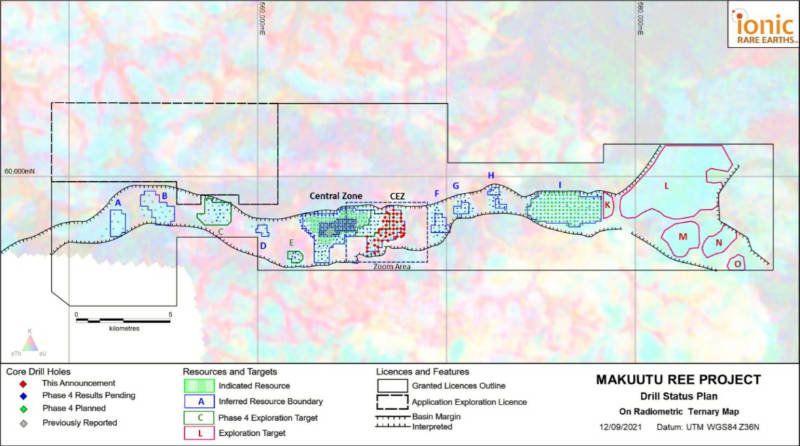Ionic’s Makuutu infill drilling is ticking all the right boxes
Mining
Mining
Ionic Rare Earths’ goal to increase Indicated and Measured resources at its Makuutu project appears to be tracking exactly to plan with drilling starting to return thick, high-grade mineralisation.
Assays of the first tranche of 50 holes drilled as part of its Phase 4 drill program confirmed the intersection of thick, high-grade and near surface intervals of ionic adsorption clay hosted rare earth elements.
These holes were drilled by Ionic Rare Earths (ASX:IXR) to infill the current Makuutu Central Zone East resource area on a 200m spacing to increase confidence from Inferred to the Indicated classification, which is sufficient for mine planning and to support the feasibility study.
While all 50 holes delivered clay and saprolite mineralised intersections above the resource cut-off grade, notable results include:
A further two tranches of samples are currently at the Perth laboratory while a fourth tranche will be dispatched from Uganda within days.
Drilling is also continuing with over 325 holes totalling 6,200m completed out of a planned 7,800m program.

“These infill results align well with expectation, given the continuity of the clay previously observed at Makuutu,” managing director Tim Harrison said.
“The thick clay mineralisation in the Makuutu Central Eastern Zone is expected to add substantial grade and tonnage in the Indicated resource classification for the Project as part of the next mineral resource estimate update expect late Q1 2022, and a key input for the feasibility study expected before October 2022.
“The near surface results with such thick zones of elevated TREO grades observed within these infill results are very positive, inferring potential to have a higher-grade mining inventory earlier in the mine plan for the project, and potentially leading to a significant positive impact on the economics of the feasibility study.”
The Makuutu Central Eastern Zone area currently has a resource of 37 million tonnes grading 740ppm TREO.
Ionic’s Makuutu project is one of less than a handful of known ionic adsorption clay-hosted rare earths deposits located outside China with scale for economic development.
Such deposits are commonly considered to be some of the cheapest and most readily accessible sources of heavy rare earths
The company currently holds 51% of Makuutu though it will move to 60% on completion of the feasibility study before October 2022. It also has the pre-emptive right to acquire the remaining 40% of the project.
It also plans to complete the downstream scoping study by mid-2022 with preliminary metallurgical testwork already underway to support process modelling that will underpin the process design using conventional solvent extraction.
Makuutu currently has a global mineral resource estimate of 315Mt at 650ppm TREO, with substantial exploration targets located across a 37-kilometre-long mineralisation trend.
This article was developed in collaboration with Ionic Rare Earths, a Stockhead advertiser at the time of publishing.
This article does not constitute financial product advice. You should consider obtaining independent advice before making any financial decisions.